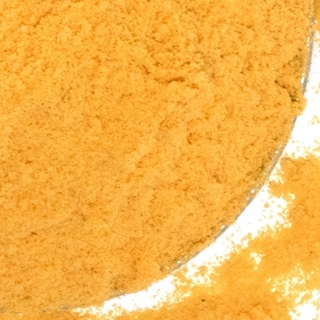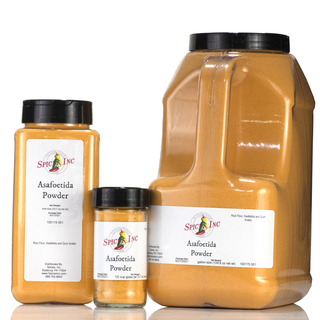Asafoetida Powder




Asafoetida Powder
Asafoetida Powder is an unusual spice. This product is a dried latex gum, taken from the roots of the plant Ferula assa-foetida and other members of the Ferula family, which looks like giant fennel. It is also referred to as asafoetida, asafoetida spice, hing powder, hing, or compounded asafoetida powder.
Asafoetida is known for its smell, which has been described as a cross between sulfur and rotten onions. To temper the smell our Asafoetida Powder is “compounded”—it is mixed with edible gum, rice flour, asafoetida and turmeric for color. When it is cooked in oil, pleasant, onion and garlic notes emerge from the asafoetida, making it a terrific background seasoning to help develop umami notes.
Asafoetida Powder is regularly purchased by independent spice shops; seasoning companies; Indian, vegan, and Italian restaurants; brewpubs; and sauce and cocktail mix manufacturers.
Flavor Profile
Asafoetida Powder is garlicky and oniony with umami undertones.
How To Use
Asafoetida is popular in South India and Bengal. It is widely used in vegetarian dishes and adds complimentary flavor to beans, lentils, and vegetables like broccoli or cauliflower. It adds depth to bean-based dishes like Rajma and can be added to Vegetable Jalfrezi to elevate the flavors of the vegetables. Add to the mushrooms when preparing them for Shiitake Mushroom and Goat Cheese Pizza. Asafoedtida can be used anywhere you would normally use onion and may become your new savory food secret ingredient for that extra umami boost; it can help balance the earthy flavor of Spiced Lentils or add richness to the potatoes and chickpeas in Cuckoo Aloo.
Asafoetida Powder is commonly used in curries, pickles, brines, with beans and legumes, in vegetarian dishes, and sauces. Certain religious groups will use Asafoetida Powder as a substitute for onions and garlic.
Asafoetida pairs nicely with nuts, grains, cumin, coriander, cilantro, mushrooms, vinegar, sesame, coconut, mustard seeds, dried chiles, ginger, or turmeric.
| Also Called | Asafoetida, asafoetida spice, hing powder, hing, or compounded asafoetida powder |
| Species | Ferula assa-foetida |
| Ingredients | Rice flour, edible gum, asafoetida, turmeric, edible oil, and natural color |
| Flavor Profile | Garlicky, oniony, umami undertones |
| Oil content | 10-17% |
| Recommended Uses | Curries, sauces, pickles, brines, beans, legumes, stews |
| Cuisine | Indian |
| How To Store | Airtight container in a cool, dark place |
| Shelf Life | 6-12 months |
| Country of Origin | India |


